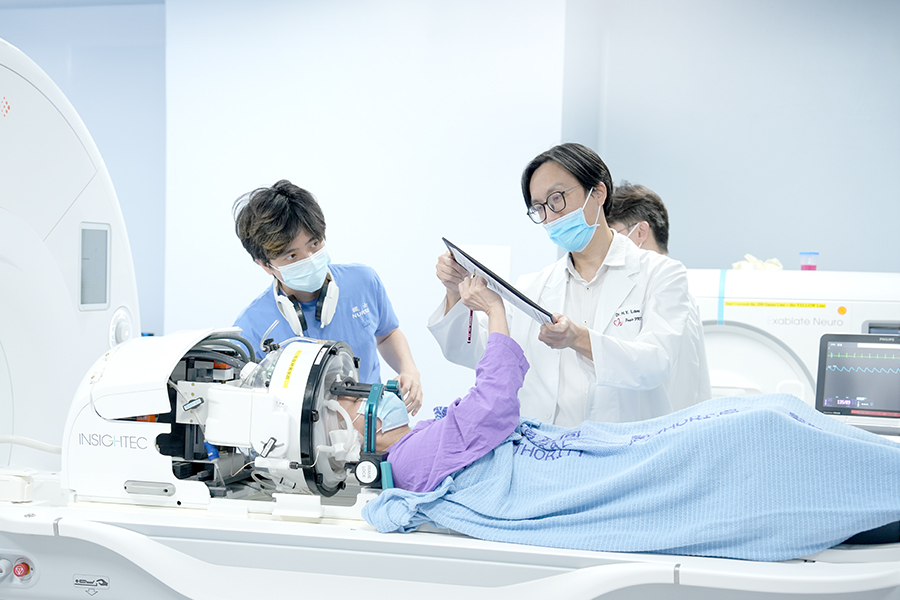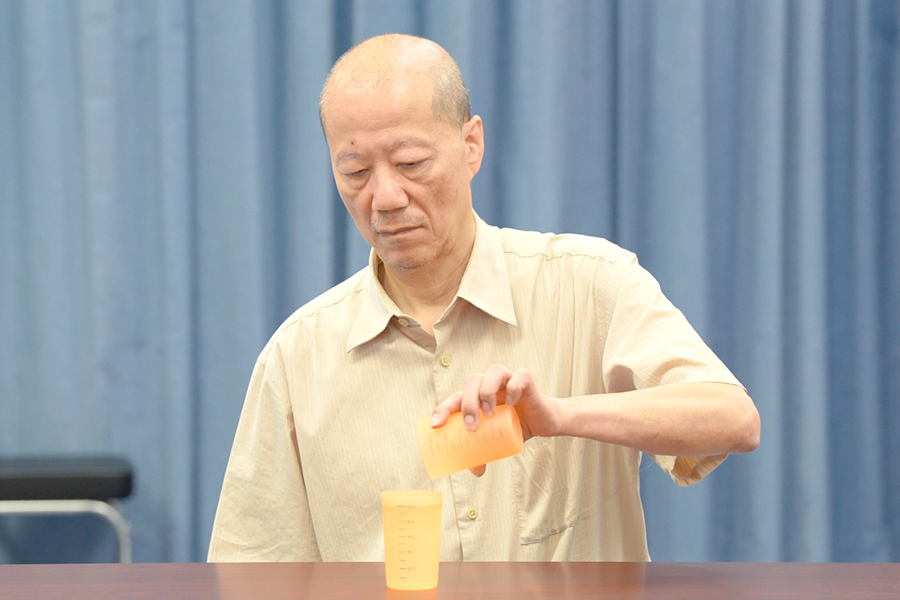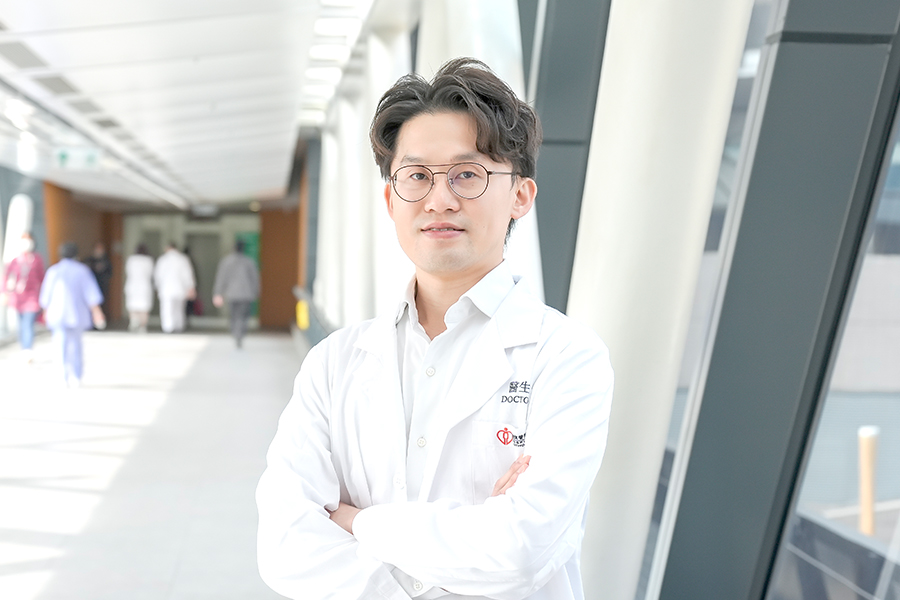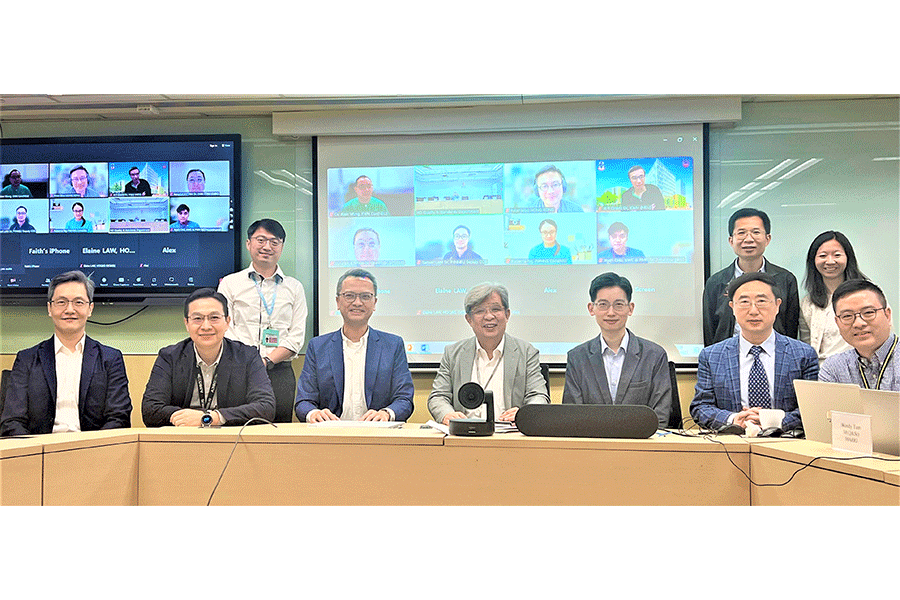Tremor treatment offers steady future for patients with uncontrollable shaking
 Mr Chan suffered from essential tremor – a condition that can lead to uncontrollable shaking of the hands – for years, making simple daily tasks such as writing, using a smartphone, or holding a cup of water extremely difficult. “On one occasion, I picked up my meal at a fast-food restaurant and my hands were shaking uncontrollably as I held the tray,” he recalls. “After just a few steps, the drink on my tray spilled.” Concerned about the risks associated with open-brain surgery, he opted for medication to reduce his tremor. However, when Hong Kong’s first magnetic resonance-guided focused ultrasound (MRgFUS) service was introduced by the Hospital Authority (HA), Mr Chan underwent treatment at Tuen Mun Hospital (TMH) in December 2024 as the procedure required no incisions or implants. Following the treatment, the tremor in his left hand disappeared immediately, improving his quality of life.
Mr Chan suffered from essential tremor – a condition that can lead to uncontrollable shaking of the hands – for years, making simple daily tasks such as writing, using a smartphone, or holding a cup of water extremely difficult. “On one occasion, I picked up my meal at a fast-food restaurant and my hands were shaking uncontrollably as I held the tray,” he recalls. “After just a few steps, the drink on my tray spilled.” Concerned about the risks associated with open-brain surgery, he opted for medication to reduce his tremor. However, when Hong Kong’s first magnetic resonance-guided focused ultrasound (MRgFUS) service was introduced by the Hospital Authority (HA), Mr Chan underwent treatment at Tuen Mun Hospital (TMH) in December 2024 as the procedure required no incisions or implants. Following the treatment, the tremor in his left hand disappeared immediately, improving his quality of life.
 TMH Associate Consultant (Neurosurgery) Dr Jason Ho (photo below) explains that the symptoms of essential tremor include trembling hands, head, or voice. “Although it is not life-threatening, it severely impacts patients’ daily lives. For example, some patients cannot sign their names, brush their teeth, or shave because of the tremors,” he says.
TMH Associate Consultant (Neurosurgery) Dr Jason Ho (photo below) explains that the symptoms of essential tremor include trembling hands, head, or voice. “Although it is not life-threatening, it severely impacts patients’ daily lives. For example, some patients cannot sign their names, brush their teeth, or shave because of the tremors,” he says.
 The MRgFUS system is located at TMH Neuroscience Centre, offers a new treatment option for patients with essential tremor. It combines magnetic resonance imaging (MRI) and focused ultrasound technologies, delivering up to 1,024 ultrasound beams through the scalp and skull to precisely ablate target areas. “The procedure is incisionless and the ablation targets area of a few millimetres in diameter in the brain,” says Dr Ho. Before treatment, patients undergo computed tomography (CT) scan to evaluate the skull density. “If the skull density is not very even, the ultrasound beams will reflect from and fail to penetrate the skull,” he notes. Patients with implants that are incompatible with MRI or those with claustrophobia are also not suitable for MRgFUS treatment.
The MRgFUS system is located at TMH Neuroscience Centre, offers a new treatment option for patients with essential tremor. It combines magnetic resonance imaging (MRI) and focused ultrasound technologies, delivering up to 1,024 ultrasound beams through the scalp and skull to precisely ablate target areas. “The procedure is incisionless and the ablation targets area of a few millimetres in diameter in the brain,” says Dr Ho. Before treatment, patients undergo computed tomography (CT) scan to evaluate the skull density. “If the skull density is not very even, the ultrasound beams will reflect from and fail to penetrate the skull,” he notes. Patients with implants that are incompatible with MRI or those with claustrophobia are also not suitable for MRgFUS treatment.
Tremors vanish even during surgery
On the day of treatment, patients must have their heads shaved, and fixed onto a frame with pins under local anaesthesia. Before performing the permanent ablation, doctors conduct low and medium temperature machine and clinical tests with assistance of real-time MRI to monitor the temperature in the brain. This helps ensure the ultrasound beams are accurately focused onto the target area with optimal temperature rise while other adjacent area is not involved. “During the procedure, patients remain awake. We ask them to draw circles or lines to assess whether their tremor improves immediately and to confirm they experience no side effects,” Dr Ho says. Patients would experience immediate cessation of their hand tremors during the procedure, which is a truly joyful and memorable moment for them, he adds.Chairman of Coordinating Committee (COC) in Neurosurgery at the HA Dr Danny Chan Tat-ming states the introduction of the MRgFUS system was the result of collaboration across the HA, including the Head Office, COC in Internal Medicine, COC in Radiology and the hospital clusters. Patients with essential tremor from all public hospitals in Hong Kong can now receive MRgFUS treatment at TMH and the HA plans to gradually increase the number of patients treated annually to around 30 within two years.
Dr Chan hopes MRgFUS can be used to treat other conditions, such as Parkinson’s disease. Meanwhile, MRgFUS treatment for dystonia is currently pending approval by the United States Food and Drug Administration. “The HA will continue to keep pace with international developments. We believe that in the future, this technology will help more patients and improve their quality of life,” Dr Chan says.
